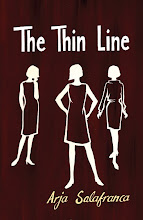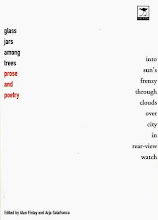You’re warned that this is the real deal. This is not sanitised, touristoriented Soweto with its B&Bs and museums ready for the public. This is Alexandra where narrow streets are lined with slums, three hostels rise like hulks over the sprawl, and a squatter camp clings to the banks of the Jukskei River. I was told that some foreign tourists are too scared to get out of the minibus, which is pity. Still, you’ll also find your posh areas with fancy copperycoloured gates here, real brick houses, and no squalor or signs of poverty.
Alex is readying itself for tourism. Gone are the days when Alex was called “Dark City” because it didn’t have electricity, or “Nobody’s Baby” because the apartheid government considered it a blight. For years there were plans to demolish Alex, the township in the heart of the northern suburbs. Now there’s a spanking new Mandela Museum set to open later this year or early next, a shopping centre is being planned, and other projects are on the go.
But I was here to be a tourist. Alex may lie a few kilometres away from the wealthy heartbeat of Sandton, but, like many whites, I had never been. Back in apartheid days, Alex had only one entrance, a bridge over the Old Pretoria Road with a sign proclaiming “Whites enter at your own risk”. Today, tour guide Abey Sechoaro, of Bosele Township Experience, told me that there are many entrances.
The day was a typical autumn one, sunlight bright Jo’burg’s roads were packed with cars. “You can take these off,” joked Sechoaro, referring to our seatbelts, as we crossed the bridge and entered Alex. It was a joke alright, referring to the huge division between Alex and out there. It is still like entering a foreign country. From manicured Sandton you glide into narrow streets lined with hawkers, shops selling cheap furniture and other goods, and live chickens are on sale in cages, one for R10, special, two for R17.
And then you enter the oldest part of Alex with makeshift tin shacks, electricity wires spanning the roofs, a bunny aerial dangling from a wire, catching TV signals. Lorded over by one of the men’s hostels, the contrast of poverty and institutionalised building is surreal. Goats scratch among grassy knolls, and a security door is firmly attached to a shack and padlocked. The narrow streets hum with people; informal stalls trade in telephone call units, fruit, vegetables, sweets and canned foods. People sit and chat in the streets, hanging up washing, a group of women were talking companionably as another plaited a woman’s hair.
The atmosphere was languid, but the large amount of people in the streets did point to a more sinister problem: Alex has a high unemployment rate. Those who can trade informally do, opening stalls and spaza shops, others wait. A butcher at the outdoor butchery was hacking away at a dead animal’s head: a clean jawbone lay nearby as smoke from cooking fires rose, the pulpy mass still bore a resemblance to a head. I watched kids playing among the narrow alleyways and paths through the shacks. I entered one where a man stood ironing in a small, dark room. The room was everything: kitchen, bedroom, living area, all in a space somewhat like a jail cell. On the wall, neatly glued pieces of red and white typing paper covers decorated the walls. The air of quiet pride was palpable.
I was taken to Nelson Mandela’s old home – a small brick structure now part of a compound of a group of families. One tap and one toilet sometimes serve up to 40 people. The ugly reality of poverty hits you then, and much of Alex is still mired in it. Inevitably you start to shake your head, that people should still be living like this, queuing for one toilet, making their homes in basic shacks.
It’s not new, this scenario, but glimpsed on the TV, or read about in countless news reports, it doesn’t touch you. You need to enter a shack, feel its cramped confines; you need to enter a compound where you can imagine people lining up before sunrise, waiting to use the facilities before rushing off to catch one or two or sometimes three minibuses to get to work by eight. Only then do you really start to get an understanding of poverty, and its wearying effects.
“Let people come to Alex,” Darlene Louw told me over lunch at Joe’s Butchery. She and Liezet Loubser are working on the Alex renewal project. She’s enthusiastic about what the township has to offer tourists, and suggests that some should do a stayover: “There’ll be some who miss their BMWs when they’re waiting for their taxis in a long line.”
“Not to mention those with beat-up Toyotas too,” I added. No matter how old your car it still beats waiting in long queues and spending hours going home. But Alex is not just about shacks and poverty, of course. There are posher areas, there’s also a gym, Ikasi gym, powered by Virgin Active. Here I saw an array of gym equipment and met a young artist, Tumi Masite, hawking striking paintings. The gym is attached to a side of a house. In a cheeky bit of humour a sign on the opposite sign of the road points to a rock painted with South Africa’s flag and warns passing pedestrians, “Don’t piss here”. In a corner shop I read another sign offering snoopy juice and vanilla mayo, but patrons were ordered not to read the sign without paying.
I visited an RDP house, built in 1999, but was told the walls were cracking and the roof leaked. This house belonged to another tour operator, Patrick Gumede, a friend of Sechoaro’s, who was busy on his laptop when I barged in, wanting to see his home. He was cheerful about this unexpected intrusion, however. At Borch’s Place we met up with some late morning patrons who also cheerfully obliged me in posing, and drinking while I took photos. This shebeen is being upgraded and is run by Monica Borchardt.
We travelled through Phase One and the East Bank, newer areas with proper housing. As we drove Sechoaro told me about his passion for encouraging tourism in Alex. Still a resident of the township where he grew up, he started his tourism business four years ago. He does all sorts of tours – from Pretoria to Soweto to Alex and beyond – but it’s Alex that he really is passionate about. It was a sentiment echoed by Darlene. “Alex has a vibe, you’ve got to look at how to sell this vibe. If tourists want to see night life in Alex, then each shebeen will offer them a particular type of vibe.” In addition a community hall is being turned into a theatre. It seems Alex gets into your bones; Sechoaro was almost speechless in trying to impart what it was about Alex that continued to grip him. Somehow the words “a special place” don’t quite do it justice.
I picked up a copy of the knock-and-drop Alex News at a corner shop. The headline that morning was, appropriately enough, “Revival of Alex on track”. According to the paper, living conditions were continuing to be improved, while construction of the Alex stadium should resume. A letter from a proud Alex resident, Monde Mbingeleli, seemed to sum it up when he proclaimed that “an Alexandrian is anyone with a place to stay in Alexandra, whether living in a shack or a house”. As we left I saw yet another sign: “It’s happening in Alex!”
(Published in The Sunday Independent, June 2006)
Monday, March 2, 2009
Subscribe to:
Post Comments (Atom)





.jpg)

No comments:
Post a Comment